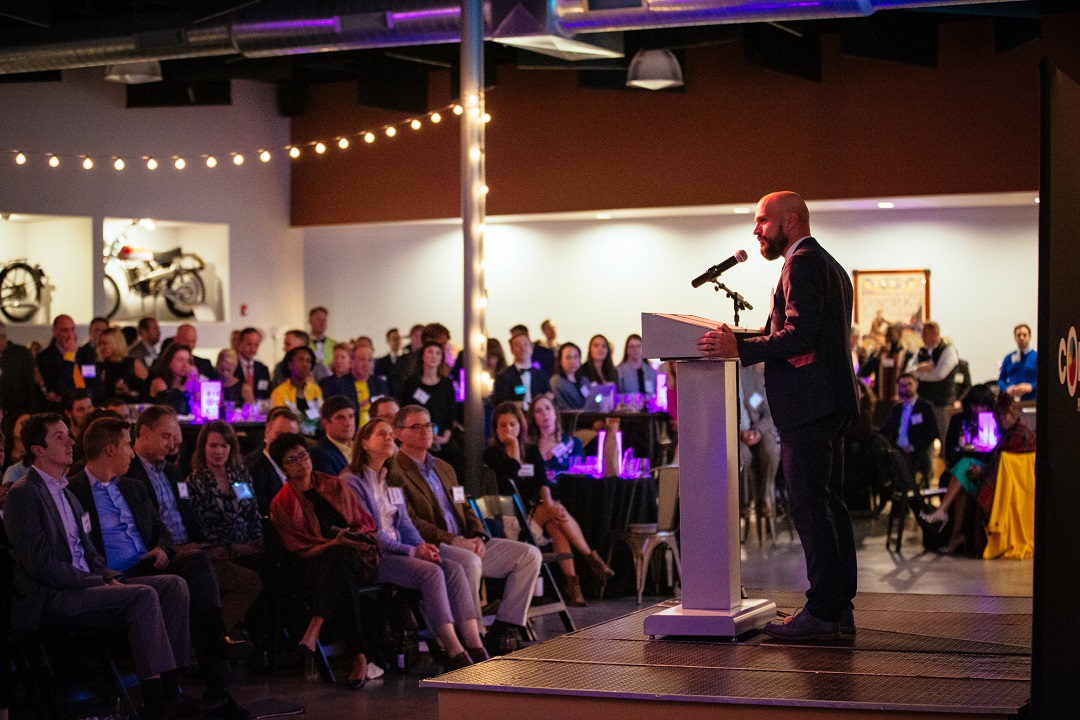After studying political science and architecture and working as a mechanic at Big Shark Bicycle Company and graphic designer, Scott Ogilvie has set up an ideal gear ratio as a voice for bike enthusiasts and pedestrians in St. Louis. A Category 1 cyclist, Ogilvie served two terms as alderman for the 24th ward, which includes the Dogtown neighborhood. He was an advocate for bolstering mass transit, pedestrian safety, and bicycle infrastructure, including the revitalization of the Penrose Park Velodrome (see July/August 2019). In April 2019, Ogilvie took on the newly created role of transportation policy planner for the city’s Planning and Urban Design Agency, which is responsible for planning, design review, construction plan approval, code compliance, and housing assistance.
How do you describe your duties in this new position?
The region has multiple transportation overlays: Metro, Great Rivers Greenway, MoDot, and private companies like BJC Healthcare and those in Cortex doing their own public works programs. It’s helpful to have someone in the planning department who can engage with all those entities. Hopefully, we get better coordination between ideas and more engagement from the city. I think it’s my role to be always asking for more, reallocating space towards people and away from cars. I think we’re evolving in the right direction as a city, but infrastructure takes a long time to change.
What projects are you most excited about?
We have a huge road reconstruction just west of Union Station that will restore the street grid and help dissolve that barrier on the western part of downtown.
The Chouteau Greenway project to connect the three biggest parks in the city — Fairground, Tower Grove, and Forest Park — to the Arch grounds is the first effort that looks at our parks as a system, as opposed to 106 separate parks, and should raise the bar on what we think greenspace should look like.
The Gravois Greenway: Grant’s Trail connection to River des Peres Greenway will link roughly 20 miles of trail between the city and county. We’ll have big, long sections that are continuous, so it won’t feel so much like a bunch of trails but a connected system.
But I get just as excited whenever we build a new sidewalk or update an intersection that makes travel safer for everyone.
What are your feelings on shared bike lanes versus separated, protected lanes?
There are good places for each. Probably most important, we need to slow down automobile traffic, which makes it a lot easier for more people to use the street and increases safety for all users — including drivers. The perception of a lack of safety is a deterrent from more people riding a bike. They’re not totally comfortable in shared spaces with cars. A study from Canada showed that low-stress, high-safety areas are even more important for female riders than male riders. So, if we want to build transportation infrastructure that works for the most people, dedicated bike lanes absolutely get more women on bikes.

What are your favorite events or rides in the area?
There’s a bunch. As a competitor, the Gateway Cup is great. I’ve been able to brush shoulders with professional cyclists who have brushed shoulders with riders in Europe. You can view yourself as part of this continuum of cyclists.
But really, I enjoy any ride with my friends and seeing parts of the region I wouldn’t get to otherwise. Riding south of Columbia, Illinois, is really fun on the farm roads. For people who are going to ride long distances, Illinois is good. It’s fun to do a ride where you see only a handful of cars, but you also realize you’re really not that far from downtown St. Louis.
What advice would you give to your fellow cyclists who want to affect change?
The general population is very supportive of better walking and biking facilities. So, when we’re advocating for issues, we need to avoid making it us-versus-them. Our mindset should be, “This is for all of us.”
There’s a lot of desire on the part of the majority of people to have better infrastructure for walking. That means building sidewalks and trails and paths, but it also means slowing down cars. That’s where, I think, advocacy can be effective, when you focus it on the experience that lots of people have: pushing a stroller or walking with an older neighbor or relative. Remind them that when we slow traffic down and we spend money on pedestrian and bike facilities, those journeys are more comfortable and enjoyable for everyone.
Author: Kathleen Nelson is a regular contributor to Terrain Magazine.


Leave A Comment